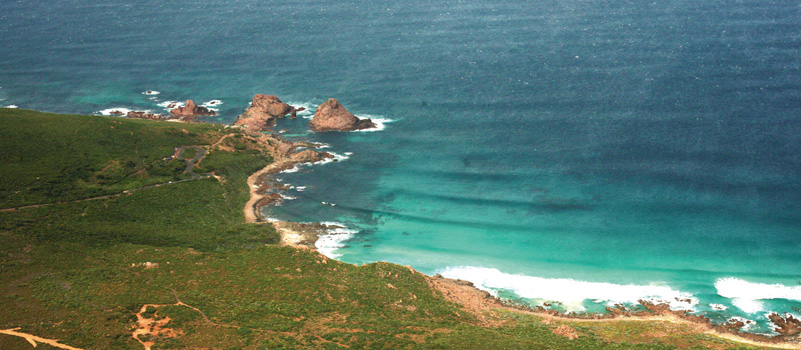

It’s a six-mile ride from the Western Australia town of Margaret River to the coast. The first half is low, rolling hills past Cape Mentelle —the northern edge of the Stevens Road neighborhood that includes Voyager, Xanadu and Leeuwin Estate. The second half begins to head downhill, the bike path strewn with round seed pods from marri trees, leading past a small church and café, then into the dunes. When I get to the beach, there’s a woman and a dog a quarter of a mile south, but there’s no one else in sight and nothing but ocean to the horizon.
Two years ago, Wine & Spirits sent three sommeliers to Margaret River to suss out the region’s most terroir-expressive variety. They chose chardonnay, which makes sense, given the talent the vine shows in coastal zones. And the six chardonnays they chose were distinctive and delicious, but I could never get past my own personal regret that they hadn’t chosen cabernet.
With 50 years in the ground, cabernet has found a home in Margaret River unlike any place else it grows. The region might be compared to the Médoc, with forests to the west separating the inland vineyards from the sea. But here that situation is compressed. Rather than 10 to 20 miles wide like the Médoc, the forest in Margaret River might span two miles, a narrow windbreak before the ocean air reaches low hills of cabernet vines. When I arrived in town this past November to research the local cabernet (page 28), I rented a bike and rode to the coast to check in on the Indian Ocean and remember the scent of the wind through the jarrah forest. These cool, gravelly hillsides on the coast are a place where cabernet sauvignon belongs.
You can find places in South Australia where it makes a delicious red wine, but few produce wines with the cool elegance, stamina and long-lived grace of a Margaret River cabernet. And you won’t find anything like it in the coastal climes of McLaren Vale, where Allison Bart, one of the editors in our New York office, landed this past July. There, the awe-inspiring wines are traditionally made from grenache, a vine that can handle the region’s dry heat. But recently, Bart found, vintners are shifting the mix in the vineyards, introducing vines from similar climates in the European south, like nero d’Avola from Sicily. Her story appears on page 24, and we’re already seeing that same story play out in other parts of South Australia: One of the best Aussie whites we tasted for this issue is an assyrtiko from Clare Valley, the vine cuttings imported from Santorini by Jim Barry.
The search for heat- and drought-resistant vines in South Australia is largely driven by a changing climate. And the same might be said about the search for abandoned vineyards in the steeps of Germany’s Mosel Valley, a phenomenon David Schildknecht covers in his “Mountain Rescue” story (p. 34). But rather than a change in the weather, it’s changes in the political and economic climate that are driving this move to the hills, after 20th-century upheaval that left these once great vineyards to revert to scrub. Few would deny the human causes of this particular climate change. It took a strengthening market for great riesling to make these sites viable again, and a generation of ambitious growers to buy them, renovate them and, in the process, discover that the genetic inheritance of these vines allows them to produce some of the most exciting 21st century riesling we’ve tasted.


This story appears in the print issue of February 2018.
Like what you read? Subscribe today.















